#1880s oil lamp
Text
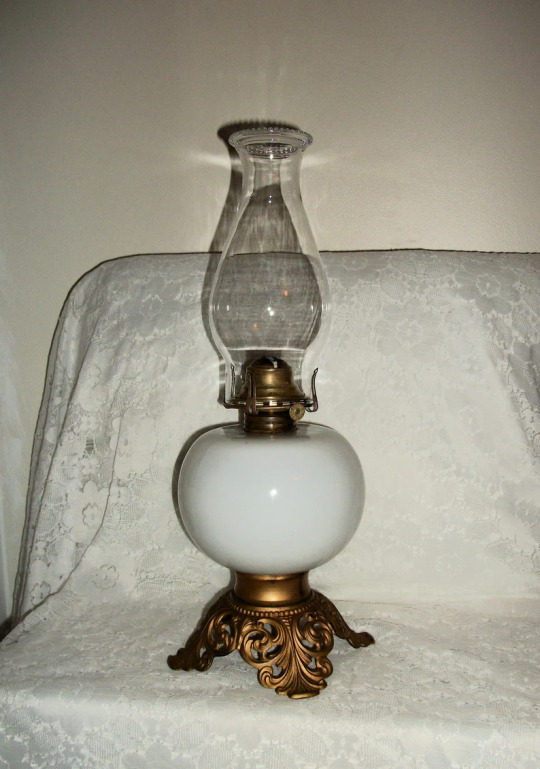
Antique Oil Lamp Victorian Edwardian Milk Glass Openwork Metal Base 18" Tall w Brass Scovill Queen Anne Burner Emergency Lighting for $70
#antique oil lamp#antique lamp#oil lamp#antique lighting#Victorian oil lamp#Edwardian oil lamp#milk glass oil lamp#1910s oil lamp#1900s oil lamp#1890s oil lamp#1880s oil lamp#antiques#susoriginals#etsy#1800s#victorian home decor#Edwardian home decor
2 notes
·
View notes
Photo



A true Victorian in Albany, Oregon built in 1880, 3bds. 2ba. $525K.
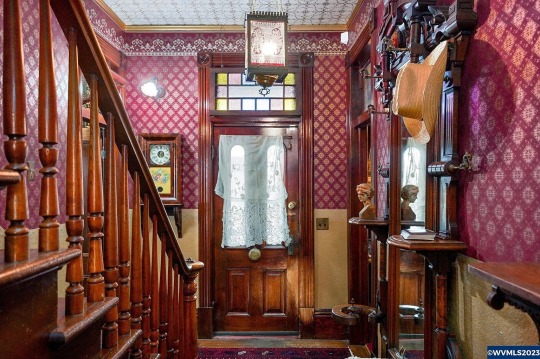
Now, this is a Victorian.

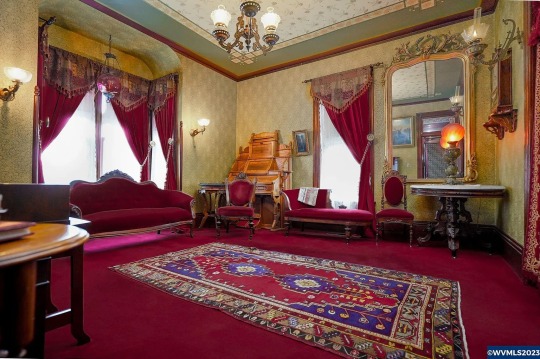
When people flawlessly restore an historic home you have to commend them.
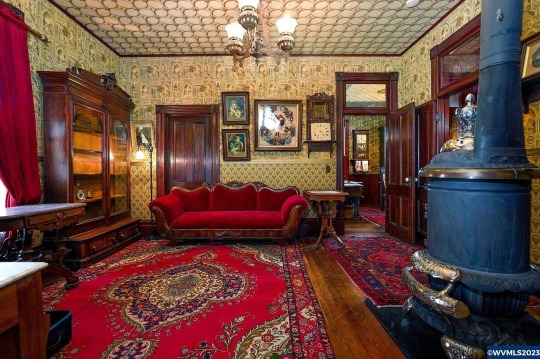

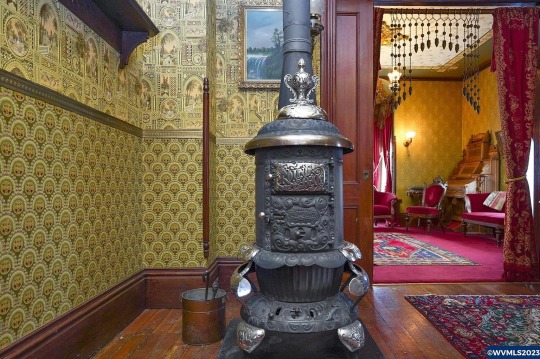
I feel like I’ve traveled back in time. Look at the wonderful French wood stove.

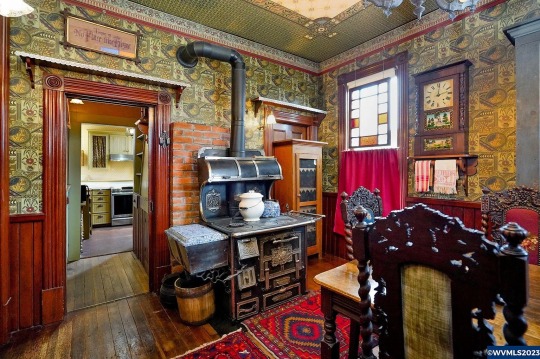

So, this is a dining area and historic “show” kitchen.

Through this little pantry is the real kitchen.


It’s modernized, (well, it has to be), and it’s cute.

The only out-of-place thing in here is the shower. But everything else is fabulous. I wish they had the Victorian shower from Reproduction Hardware.
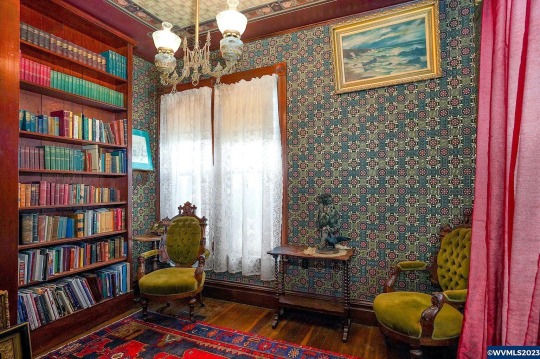

Nice little library.


Look how the stairs curve.


This home is so authentic. That lighting fixture looks like the original gaslight or oil lamp that was electrified.
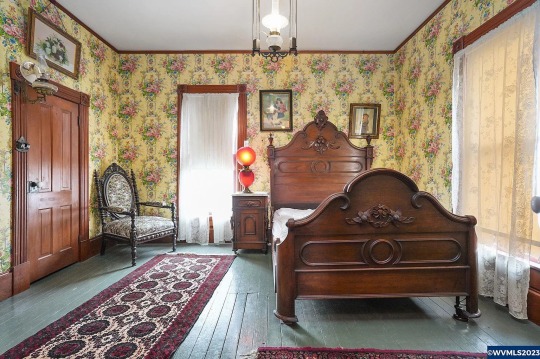
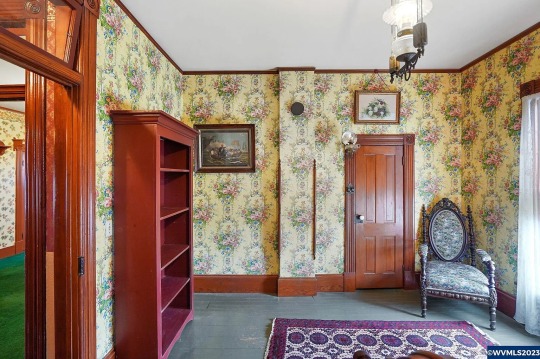
So pretty. All the wallpaper is so spot on.

The owner’s furniture is amazing, too. Look at this hall stand.
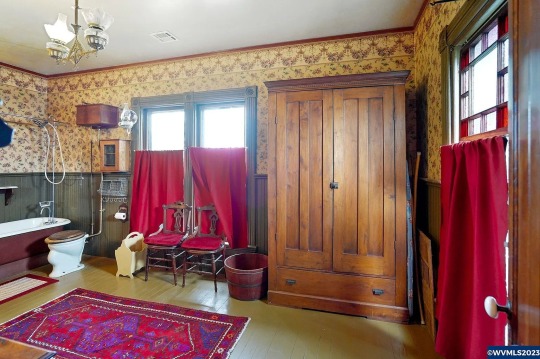

Wow, what a large bathroom. I wonder why the toilet is so close to the tub, though.
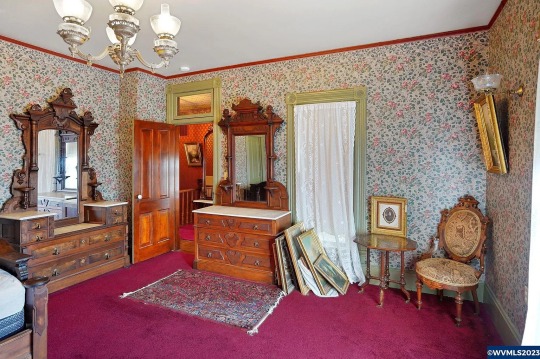

It’s hard to picture this w/o the furniture. It would cost a fortune to buy antiques like this.


The old brick foundation in the basement. They shored it up, but didn’t touch the brick.

Some extra plumbing fixtures. Is that tub hooked up?
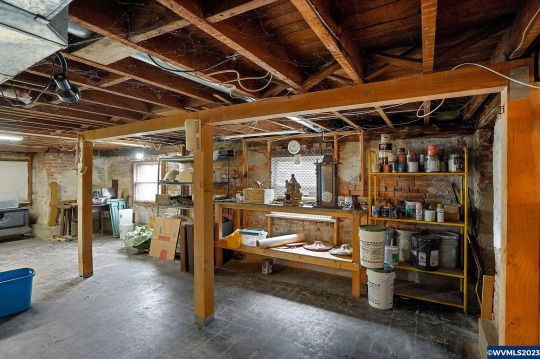
A little work area.
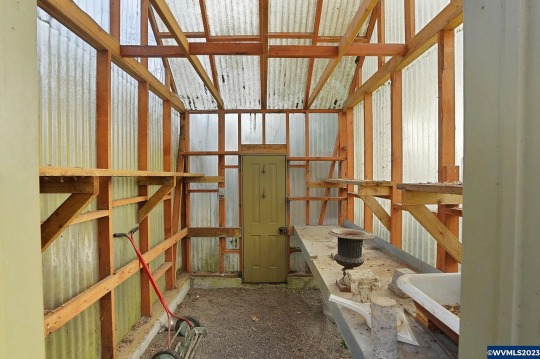
This is great- a garden room.


There’s a cute yard.

Nice garden and back porch.

Driveway and car port around the back.
https://www.zillow.com/homedetails/1106-Ferry-St-SW-Albany-OR-97321/48475821_zpid/
276 notes
·
View notes
Text
The Antique Dealer
I am not the wildflower ironstone bowl
I just acquired nor am I the imitation
mid-century smoked glass lamp I
purchased at HomeGoods
[because it reminded me of a pair my
parents owned].
But how can I negate that through a
number of items, archived type written
thoughts,
I am telling or retelling a story that is
not fully understood by me?
I received through the mail yesterday
an oil painting circa 1880. It is
crackled, imperfect puts it mildly; and
I guess I possibly paid too much for it,
but the portrait of the man on canvas
bears an uncanny resemblance to an
old best friend. I have not seen him
in over a decade
and this is as close as I’ll get to being
with him. Does anyone in my family
know this is why I, I sent for this
painting?
I prefer to pull shadows forward in
plain sight. I’ve contracted myself to
play translator of sorts. If you walk
into my home, everything will be
the Rosetta Stone.
Do I need the grave goods?
I cannot say that I do. This is not
what this is. I am just very fond of
leaving emotive testaments.
When asked, I tell my family that I like
to speak or reveal a story in residual
fragment like visions. Take the iron
stone bowl for instance–I am playing
like the God of ole who has always
done the same.
24 notes
·
View notes
Text
So here is the scientific advancement which might be shown in Ikemen villain and some bit of history
I may have gone overboard because it was fun, so enjoy.
Also if you all think this is a nerd talking you are thinking correct
FIRST AND FOREMOST DINOSAURS SO IT WILLIAM REX THE W - REX, More and more fossils were discovered in 19th century and it was the year of 1842 the term Dinosaur was coined
Charles Darwin the father of evolution published his one of the renowned book 'The Origin Of Species' in 1859. (As a microbiologist this was epic)
Also, In 1866 Gregor Mendel discovered laws of hereditary but it wasn't until 1900 his work accepted
Now again as a microbiology student this makes me very happy, during the years between 1822 - 1895 Louis Pasteur published the Germ theory which proved Germs were the cause of the disease ( Well there were many diseases in victorian era because they believed bathing actually causes more sickness)
Here medicine and surgery made the great advances, and it was also proved Cholera was transmitted by water but they didn't know how. (But it wasn't until 1928 the first antibiotic was discovered)
In 1831 Faradey invented Dynamo.
In the year of 1876 Alexander Graham Bell invented Telephone (It means there would be a scene where MC will call her wink wink)
Safety pins were invented in 1849. And in 1882 Henry Seely invented the very first electric iron
Gas lights were becoming common at houses of well-of people in the 1840s, but by late 1870s working class people had Gaslight at least downstairs they still had to use oil lamps
Gas cookers became common in the 1890s and Joseph swan also invented the Electric light bulb in the year of 1878
Aesthetics were coming to use in surgery first by an American dentist Henry H Morgan in 1849 by using ether. But James Simpson a professor started using chloroform in operations in 1847 (wtf man but cool).
Also another fact, People thought women shouldn't use chloroform during childbirth because childbirth is supposed to be painful but our awesome Queen Victoria said 'Hell nah' in 1853 and who would criticize the queen hence chloroform became a use in childbirth (Men will be men)
Again as biology student this makes me greatly happy, In 1865 Joseph Lister discovered antiseptic surgery.
Cash Register was invented in 1879 and first electric fan was invented in 1886.
19th century was also the time where bicycling was fun. And it was also the time photography became a hobby (hoping a scene in the game where the male leads has MC's photo in his wallet)
In the 19th century many people experimented with machine guns. Hiram Maxim in 1884 invented machine guns and the British army adopted machine guns in 1889
Some Notable historical moments
The matchgirl strike movement took place in 1888 which was lead by Sarah Chapman which was the start to gender equality
In year 1836 slavery was abolished from British Empire but the former slaves were bound as apprentices and they were worked without any pay from their 'owners'.
In 1845 Irish Potato famine began because a disease called potato blight a fungal disease destroyed the crops.
In July of 1848 Public health act was passed, after Cholera outbreak.
1 May 1848 THE GREAT EXHIBITION OPENED FOR THE FIRST TIME. A series of world fair an international exhibition showcasing the achievement of each nation.
In March of 1848 Crimean War began a conflict between Russian Empire and an alliance of French Britain and Ottoman Empire AKA currently Turkish Empire and Sardinian Troops the war came to an end in February 1856 with Treaty of Paris wait part surrender of Russia. Both sides faced a massive death toll as 1.5 millions of soldiers fought and 367,000 soldiers died.
17 November 1869 The opening of the infamous Suez Canal.
2 August 1880 law regarding every child under the age of 10 should have a compulsory education which lead to decrease of child labour and child death.
25 JULY 1889 FOUNDING OF THE WOMEN'S FRANCHISE LEAGUE. Feminism babyyy, Emmeline Pankhrust a women right activist founded this league a political organization that campaigned women should be allowed to vote and which later gave a rise to women suffragatte movements
40 notes
·
View notes
Photo

['Moon and Sea II' (1923) by American painter Arthur Dove (1880-1946). Oil on canvas, 24 x 18 in. via crashingly beautiful]
* * * *
This Advent moon shines cold and clear,
These Advent nights are long;
Our lamps have burned year after year
And still their flame is strong.
'Watchman, what of the night?' we cry,
Heart-sick with hope deferred:
'No speaking signs are in the sky,'
Is still the watchman's word.
[From her Advent poems, by Christina Rossetti]
63 notes
·
View notes
Text

THE WIDOW'S PROMISE
(A GHOST STORY)
“Mr. Kennedy, I think you’ll find the accommodations here quite satisfactory. The house was built in 1880, and has been nicely maintained by the keeper who preceded you. The tower is just a short walk from the house, as is the supply hut, and the property is protected from extreme weather by the woods that surround the area.”
“It looks quite comfortable indeed, Mr. Kefauver. I did want to inquire, however, about the stories I heard at the tavern-“
“Pay them no mind, Mr. Kennedy. You know how the locals will gossip. There’s not a lighthouse anywhere in the world that hasn’t birthed its share of tragedy, and with that come legends of the supernatural, and what not. It’s just gossip, I assure you, and exaggerated in the retellings of those who spend their evenings on barstools, lubricated, shall we say, from reality.”
“I understand, but-“
“Mr. Kennedy. You are quite fortunate the government appointed you to this position. You’ll have a very important job serving the community, a more than adequate salary, and a place to live, rent free as well. I suggest you make the most of it.”
“Oh, I intend to Mr. Kefauver. I appreciate your time.”
“Are you ready to move in, then?”
“I am. There’ll be a carriage along, I expect, in a couple of hours with my belongings. I need to go into town for kitchen supplies, and to the grocer, but, yes, I’m ready to assume my duties.”
“Excellent. I’ll be on my way. I’ve a great deal of work ahead of me today. Here are the keys to the property. House key, supply hut key, and the key to the tower door. I wish you good luck, and welcome to Marblehead.”
“Thank you, sir. Thank you very much.”
I watched him make his way back to his coach, and I walked over to the tower, opened the door, and ascended the narrow, winding staircase to the top. I carried a lantern in one hand, and my bible in the other. I wanted to spend some time getting use to my new surroundings before my things arrived.
When I reached the top, I peered into the darkness. With the lantern I could see another mounted on the wall, and I reached for a match. The glow illuminated the small quarters where I would be spending all my evenings in the foreseeable future. There was a desk situated before the main window beneath which was the lamp that would cast a beacon on the waters below. It appeared to be, upon further inspection, a Frensel lens with an oil vapor lamp, and a clockwork system for rotation on the waters. More than adequate, I thought. It was in fine condition as well. Pity the same could not be said for the rest of the room. There was dust and cobwebs everywhere. I did notice two rows of bookshelves on the west wall with several volumes – also coated in dust. There was a small oil lamp on the desk, and a cot against the east wall. There was no pillow and no bedclothes, but I assumed I’d find some in the cupboards of my new home. The oil for the lamp would be in the supply hut along with various tools. Yes, yes. This will do nicely. A bit of cleaning and it should prove quite comfortable. Given that the lighthouse has been vacant for several weeks, I couldn’t have expected much more.
Just then I heard the clip clop of hooves, and the creak of wheels crunching the gravel of the drive below. The carriage with the rest of my things had, no doubt, arrived from the city. And I quickly doused the lamp, and descended the stairs to greet it.
I spent that first evening tending to housekeeping, and exploring the house itself where I would be spending my days. I got most of my belongings stored away, and I managed to bring some firewood inside and drew water from the well behind the house so I might wash up before bed. I’d gone into the city and bought a few essentials. I wasn’t much of a cook, but I could manage simpler things and most anything in a can. From what I’d heard, the previous keeper employed a woman to mind the house. But I could ill afford that on my salary. Nevertheless, I was grateful for the opportunity. Keeping the lights had always been an ambition of mine from boyhood. My father had served in the navy and had great respect, and gratitude for those who assisted mariners in their safe passage the world over. Tomorrow night I would get my first taste of the profession. For tonight, I would bathe, build a warm fire, and curl up with the Old Testament.
_____
I slept well, and rose much past dawn – a good thing since from now on I would be awake into the wee hours of the morning tending to my job. After a brunch of soup with a few carrots on the side, and an apple for desert, I decided to walk the property and do a bit of exploring while I still had some daylight. The supply shed was fully stocked with everything I’d need for the tower. The picket fence that surrounded the property needed a bit of repair work. The hinge on the front gate had rusted, and the gate was hanging. I wandered off into the woods that circled the perimeter and gradually led to the rocky shore below, and the waters of Lake Erie. It was overcast, and I suspected I might see some rain before the day was out. If it stormed, my first night on the job might well be a treacherous one.
As I walked a path from the shore back towards the house I noticed a flat, stone marker on the ground with a few flowers carefully laid upon its face. I brushed them aside and read the crudely chiseled inscription: Katherine Laughton, Born March 2nd 1864 Died April 6, 1912. I recognized the name because I’d heard it in the tavern in town the day before. Katherine Laughton was my predecessor. She’d kept the lights at Marblehead until her recent death. Her husband, David, had been Marblehead’s keeper when the two met. When he passed, she assumed his duties. But the talk at the tavern – the “gossip” Mr. Kefauver dismissed so brusquely, had it that the Laughtons had died tragically and in mysterious circumstances on these very grounds. But I could gather no details before I had to be at the property to greet Mr. Kefauver. I hadn’t realized Mrs. Laughton had been buried on the grounds. And I wondered where the flowers had come from. They were still fresh.
As dusk approached, the wind began to pick up, but there was still no rain. I gathered my bedclothes, and a pillow, and carrying my yet unlit lantern, and bible, I ascended the stairs of the lighthouse for my first night’s work. Earlier in the day, I had prepped the lamp, filling it with oil, cleaning the lens, and positioning it so that I might get right to work at dusk. Once upstairs, I took the bedclothes and made up the cot where I would take short breaks throughout the night as needed. I discovered some paper in the desk drawer along with a quill pen, but there didn’t seem to be any ink, so writing was out of the question. If it were slow, I would turn my attention to my bible or to the dusty volumes on the bookshelves of the wall above.
As dusk gave way to night, I positioned the lamp, and cast its saving light upon the waters below. Even on such a cloudy night, the illuminated sea was a marvelous sight to behold, and I stood at the window admiring it for some time before I decided to do some reading. I’d seen no vessels of any kind on these waters just yet so I walked over to the bookshelves and began looking for something to browse through while I waited. There were a number of technical books about the care and maintenance of the lighthouse and its range of equipment. But I noticed two volumes of The Annual Report of The United States Life-Saving Service for the Fiscal Year Ending June 30, 1911. I found that rather curious and when I drew them from the shelf to further inspect them, I noticed one was heavier than the other. I opened the heavier of the two and discovered that its pages had been hollowed out, and resting within was what appeared to be a log book or journal of some sort tied with a piece of twine. I carefully removed it, and carried it to my desk where I untied the piece of twine. I opened it and found in handwriting on the opening page the words The Private Journal of Katherine Laughton March 1912. The next page was blank, but following that were a series of journal entries beginning March 23rd 1912, and continuing until April 5, 1912 – one day before her death as I recalled from seeing her gravestone. Anxious at the notion of discovering exactly what had transpired in the weeks prior to her death, I began reading.
March 23, 1912
We buried my beloved David today following his tragic accident. The minister who conducted the ceremony delivered a lovely eulogy, and the church was filled with the townspeople who’d known David for so many years and who had welcomed me to the community when David and I married. I still cannot believe he is gone, and I cannot seem to stop crying. I must find a way to contain my grief, for keeping this lighthouse in full working order is my responsibility now, and my promise to David’s legacy.
March 24, 1912
Eloise hovers near me whenever I am in the house. I know she is worried about how I am coping with David’s death. She prepares more food than I can consume, reminding me that I must keep up my strength. But it has been a blessing to have her here – especially at a time when I prefer not to be alone. There is enough solitude in the tower, and I save my crying for when I am on duty so as not to further distress my devoted housekeeper, and friend.
March 25, 1912
The duty was especially difficult this night with the inclimate weather. The clouds were moving in a pattern I had never before witnessed, and though the waters were choppy and the rain intense, there were no accidents to confront. I did, at one point, think that I had seen a figure of a man on the rocks below just after midnight, but it just as quickly vanished, and I assume it was an apparition as a result of hours of stress. At least the evening provided a respite from the relentless sense of grief from which I have been suffering.
March 26, 1912
For the second consecutive evening, the weather has been disagreeable to say the least – and again after a beautiful day with much sunshine, and almost no wind. Dusk seems to bring on the demons in Mother Nature. But there were, thankfully, no incidents on the water, and I take some sense of pride and relief in that. I believe David would be proud of me.
I noticed there was no entry for the 27th of March, and I thought that strange – until I read the entry for the 28th:
March 28, 1912
I shall try, to the best of my ability, to recall exactly the events that transpired last night, the 27th of March on this property.
I arrived at my post promptly at 5:30 p.m. It was beginning to get dark, and I spent the first minutes preparing the lights for my shift. Weather conditions were threatening for the third consecutive night with winds at more than 50 knots, and an accompanying thunderstorm with lightning. Upon casting the light on the waters I spotted a freighter in rough waters attempting to navigate its way through the winds. It rocked to and fro, but appeared to be holding steady. There was no diminishing of the conditions for the next several hours, and I remained at my post ready to act should any problems arise. Most of the boats in the water were commercial freighters making their journey back to their docking stations after the day’s work. There was also a trio of fishing boats traveling east into the winds and struggling to make headway. But each was holding its own, and as the hours wore on I began to feel the evening would pass without serious incident.
At approximately ten minutes past midnight, the rain finally ceased, and I moved to the window overlooking the lake. Peering down into the darkness on the rocks below, I am certain I saw the figure of a man making his way over the rocks and towards the path to the lighthouse. I could not imagine what anyone might be doing on those rocks at that hour in such weather, but he surely needed assistance. I reached for my cloak, and lantern, and made my way downstairs and outside. I walked the grounds around the house and tower first to see if he might have made his way there as I was descending the stairwell. But I saw no one. And I got no reply when I called out. So I circled around and walked down the stone path that led to the shore. Again I saw no one and got no replies to my calls. After approximately 20 minutes, I decided to make my way back to my post. As I reached the door, Eloise, my housekeeper called out to me. She had heard a noise and spied my lantern and was worried there might be trouble. I assured her everything was fine, and not wishing to alarm her, I simply told her I was patrolling the grounds to make certain nothing was damaged in the storm. I told her to go back to bed, and I returned to my post in the tower.
When I got upstairs, I noticed the candle on my desk, and the lantern hanging by the door were both extinguished. I thought that odd, but I found the matchbook in my desk drawer, and proceeded to first light the candle on the desk. When it was again burning, I picked it up to carry it to the door lantern so I might see to relight it when I was startled by the figure of a man in the corner of the room. It appeared to be the same man I’d seen on the rocks below, but I had locked the door to the tower when I left. I addressed him forthwith, asking him to identify himself immediately. He said nothing, and when I lifted the candle to get a better look at him, I was mortified to see looking back at me the face of my first husband, Jack O’Reilly, a merchant seaman who’d been killed eleven years prior in an accident at sea during a terrible storm. His body, along with those of several other men onboard, had washed upon these very shores, and I had identified the body to the coroner, and the chief of police. We had given him a proper burial three days later. I must have screamed out because he quickly vanished from my sight, and moments later, Eloise was calling out to me from below. I quickly descended the steps once more, and came rushing out to find her standing just a few feet from the tower and holding the rifle we kept in the house.
When I told Eloise what I had seen, I could see from the look in her eyes that she regarded my tale with skepticism. She told me I must have been dreaming, or possibly I imagined it – that Jack might have been on my mind because of the storm and the long night watching the ships on the lake battle the treacherous conditions. Not wanting to upset her further, I pretended to agree with her, and after several minutes convinced her to return to the house so I could continue my shift. She offered to accompany me to my post to be certain everything was in order, but as she is getting on in years, I decided it was too dangerous for her to make that long climb. I reluctantly ascended the stairs again, hoping I would not see what I had seen earlier, but I told myself that I had no reason to fear Jack O’Reilly. Ours had not been a perfect marriage, but we had made it work, and when last I’d seen him alive, we were on good terms.
I entered the room slowly, raising my lantern in each direction to be certain I was, indeed, alone again. There was no sign of Jack, nor was there any evidence he had ever been in the room. Perhaps I had imagined it. But if under oath, I would swear I’d seen him.
The rest of the night passed without incident. I logged the activities on the lake in my logbook, and when I descended the tower come daybreak, I found a beautiful early spring morning greeted me.
I had been so absorbed in reading Katherine Laughton’s journal that I realized I was neglecting my own duties, so I closed the journal for the duration of my shift, returning it to its hiding place, and resumed my duties. The night passed quietly, but after what I had read, I found myself unable to sleep. I stayed in the tower until the sun began to rise, and decided to go to the house and make myself an early breakfast.
From my kitchen window I could see that it was going to be a beautiful day, and I thought I might try and repair the hinge on the gate out front. I dried the last of the dishes, and went to my toolbox to get some tools. When I stepped out on to the front porch, I caught sight of someone entering the woods on the Northeast side of the property. So I followed the trail, and as I approached the clearing where I’d discovered Katherine Laughton’s headstone, I saw an old woman kneeling at the grave and placing fresh flowers upon the stone. Not wishing to startle her, I quietly backpedaled to the entrance and waited for her to emerge.
A few moments later I heard a rustling sound, and she suddenly appeared from behind a tree.
I had an idea now from reading the journal who this might be, and I called out to her.
“Eloise?”
She turned immediately, and replied, “Who is it?”
“Eloise? My name is Clifton Kennedy. I’m the new lighthouse keeper here, and I wondered if I might talk to you about Katherine Laughton?”
She eyed me suspiciously, and then answered curtly, “I don’t want to talk about that. I have to go now.”
“Eloise? Please? I need to ask a couple of questions and you might be the only one who can help me?”
I approached her slowly, and repeated, “Please?” Her expression softened a bit, and she nodded her head.
“Thank you.”
“How do you know me?”
Not wanting to reveal the contents of the journal or its whereabouts just yet, I told her that her name had been mentioned at the tavern when the locals were discussing what had happened to Mr. & Mrs. Laughton. But I added that I had not been able to get the entire story, and I wondered if she might help me.
“What else is there to know? They’re both gone now. Good people, just gone forever. Senseless.”
“How did it happen?”
“Well no one is for certain about that. But one morning I was making breakfast in the kitchen, and Mr. Laughton was late coming in from the tower. Mrs. Laughton went out to fetch him, and when she opened the door to the tower, I heard her scream. Mr. Laughton was lying in a pool of blood at the bottom of the staircase. It was plain he’d fallen down the steps. The doctor said he probably died almost instantly. That’s a pretty long staircase, you know.”
“Yes, ma’am, it is. Did they have any idea why he might have fallen?”
“Not for certain, but we’d had a storm that night and Mr. Laughton may have been out in it, and gotten his boots wet and slipped. That’s what doc thought happened.”
“And Mrs. Laughton?”
I noticed there were tears welling in her eyes, and she said, “Same.”
“The same? Mrs. Laughton also fell down the stairs?”
“Exactly two weeks to the day after Mr. Laughton. When she didn’t come in for breakfast that morning, it was me who went to fetch her, and…well, it happened again.”
“I’m sorry. I truly am. From what I understand they were fine people.”
“None like them. I worked for Mr. Laughton for 34 years, and when he married she became my best friend.”
She began crying. I offered her my handkerchief, and once she’d composed herself she added, “I bring fresh flowers to the gravesite every few days. Sometimes I stay awhile and talk to her.”
“I understand. I’m very sorry to have troubled you, but I wondered what happened. Did the doctor think Mrs. Laughton fell for the same reason as her husband?”
“No. Mrs. Laughton was struggling those last few days. She took Mr. Laughton’s passing very hard, but she was determined to carry on minding the lighthouse. I tried to tell her it would be too much for her, but she insisted. But in the end, I don’t think she was up to it. She felt the stress of it, and losing him the way she did….well, she started having hallucinations. Started seeing things – like visions of her first husband who’d died at sea years earlier. I think they frightened her to the point where she lost control and became disoriented, and just fell.”
“It certainly is a strange coincidence. Can I ask you one more question?”
“Go ahead.”
“I was wondering why Mr. & Mrs. Laughton are not buried side by side.”
“Mr. Laughton wished to be buried in the cemetery down the road with his kin. But Mrs. Laughton told me after he passed that she wanted to be buried near the lighthouse when she passed. She loved this place more than anything. She told me once she’d finally found the home she’d always wanted.”
“I see. Well I won’t take any more of your time, ma’am. I certainly appreciate you answering my questions. You’re always welcome on the property, too. Feel free to come by anytime.”
“Thank you. Mr. Kennedy – is it?”
“Yes, ma’am. You’re very welcome.”
And with that she turned to go.
Given what I had read in Katherine Laughton’s journal, I don’t believe her death was an accident at all. Perhaps the final few entries would prove me right. Though I needed to try and get some sleep after the long night, I couldn’t resist returning to the tower to finish reading the journal.
March 29, 1912
It is peaceful once again tonight. The storms have passed through, and this evening is as beautiful as the day that preceded it. I’m grateful for such a blessing. I trust things will return to normal now.
March 30, 1912
Another quiet evening. I dozed off at my desk reading. I’ll update my log and go see what Eloise has made for breakfast.
March 31, 1912
I did not sleep well. I had strange dreams. I saw Jack again in my dream this time, and dreamed he was angry with me for some reason. He seemed to be trying to tell me something in the dream, but I couldn’t hear him for the storm raging. It’s going to be difficult staying alert tonight on so little sleep. But I must try.
There were no journal entries for either April 1st, 2nd or 3rd. But on April 3rd, all hell broke loose and it was documented in the April 4 entry – two days before she fell to her death.
April 4, 1912
After two days of peace and quiet that passed wholly without incident – either on the waters or in the tower, the storms returned again last night, and again, just after midnight, I saw the face of my dead husband, Jack O’Reilly peering back at me through the window opposite my desk. Had he managed to scale the lighthouse wall in order to reach the platform that had been built for servicing the lamps from outside the tower? The only way to access the landing was through a small service door to the right of the desk. The door was padlocked, and mine is the only key. The lock is intact, and the key still with me. So how did he appear on the landing? Or did he? Did I imagine it? No, I couldn’t have. It was no dream. And the expression on his face was one of murderous rage. He means to do me harm. Perhaps he wants me dead. I screamed at him, demanding to know what he wanted. But he just glared and then vanished again.
I had to see for myself, so I took the service door key and removed the padlock, and stepped out on to the landing. He was not there, and looking down I saw nothing that would have granted him access at such a height. I must now consider the possibility that he is an apparition haunting me. But why?? I never harmed nor so much as disparaged him in any way. Why does he have such malice towards me? And if he is some errant spirit, can he do me physical harm?
These were the questions I asked myself, and the answers were forthcoming. When I attempted to go back inside the tower room, I found the service door locked. I was trapped on the landing with no way to escape. I could not see him, but I heard him laughing, and suddenly felt icy fingers on my throat. I feared he was attempting to strangle me, and throw me off the landing to certain death below. But there was no strength in his fingers - just the cold chill on my neck. I screamed as loud as I could, and that brought Eloise out of the house, calling my name. As she did, I felt the presence vanish. I could no longer feel his hands on me. I called down to Eloise that I was stranded on the landing and the door was locked. I needed her to go to the farm up the road and tell them to bring the sheriff, and a locksmith.
Some time later, they arrived on horseback, and both the sheriff and the locksmith made their way up the stairs to the tower room. They called to me that I would be safe as soon as the locksmith removed the padlock. But, seconds later, the door opened. It was not locked. The padlock remained on its chain, hanging freely – still unlocked – just as I’d left it. I protested that the door would not open for me, and both looked at me with doubt in their eyes. Eloise, now frantic, called out to me, and I assured her I was once again safe. The sheriff insisted I come out of the tower, and into the house where I could explain what had happened.
Reluctant to reveal anything that might cause them to brand me as unstable or, worse, insane, I lied to them, and told them I’d gone out to the landing to make some adjustments on the lamp, and the door, closing behind me, must have jammed. I had tried repeatedly to force it open without success. That’s when I screamed for help.
The sheriff did not question my explanation, but I don’t think he believed I was telling him everything. He began asking me about how much I’d been working since my husband David had passed, and suggested that perhaps the job was too much for me to handle alone. I protested angrily, and when he tried to reason with me, I stormed out of the house. He followed, and retracted his suggestion in order to calm me down. But it was apparent to me that if there were any further incidents of this kind, that he might well contact the Life-Saving Service and have me removed as keeper of the lights at Marblehead. I could not allow that to happen. I had made a vow to David that I would carry on his work and I meant to do so.
In order to appease the sheriff I promised to see the doctor as soon as possible for a complete examination. He accepted that, and that was the end of it. He and the locksmith rode away, and Eloise and I went back inside the house, both of us exhausted.
April 5, 1912
Tomorrow morning I’ll shall ride into town and keep my promise to the sheriff to see the doctor. When he assigns me a clean bill of health, perhaps everyone will stop worrying, and I can get on with the business of managing this lighthouse. In the meantime, the evening ahead promises to be quiet. The weather is cooperating, and perhaps I can start fresh after the events of the past couple of weeks. I have decided there is no reason to fear the spirit of my deceased first husband. If he could harm me, I’m certain he would have by now. It seems all he is capable of is disrupting my routine, and stirring up trouble. But I simply won’t allow it to continue. If he reappears, I shall stand up to him, and drive him away from here. Now I must tend to the lamps, and retrieve my logbook. My greatest pleasure now is minding this lighthouse, and I mean to do so to the best of my ability.
“That’s all? That’s the last entry and there is nothing here at all that suggests what happened later that night that might have caused Katherine Laughton to fall to her death. Perhaps it was an accident after all,” I said aloud to myself.
“It was no accident, Mr. Kennedy.”
The voice came from the far corner of the room. It was a woman’s voice. “Who is it? Who’s there?”
“No need to be frightened Mr. Kennedy. I’m Katherine Laughton.”
Shock doesn’t begin to describe my reaction. “You’re alive?”
“Oh, heavens, no, Mr. Kennedy. I am a spirit, and I’ve been watching you since you arrived. I hadn’t intended to stay. I just wanted a look at my replacement so I could be certain my husband’s lighthouse was in good hands. But when you discovered my journal, and began reading it, I thought there might be a few questions you’d like answered when you reached the end.”
“Uh, yes, of course. Uh-“
“Relax Mr. Kennedy. I assure you I mean you no harm. I’m only here to finish the tale for you so you can tend to your business. I have no desire to see you constantly distracted from such important work as this while you try to solve a mystery you could never solve on your own. Now then, why don’t you ask me the questions that are still on your mind?”
“Alright, Mrs. Laughton-“
“Call me Katherine. Please?”
“Certainly. Katherine,” I said her name very deliberately. “I guess my first question is, how did you fall?”
“Well after I completed the journal entry you just read, I put the journal back in its hiding place, and withdrew my logbook from the desk, and went about cleaning the lamps, and tending to my job. Several hours later, however, the wind began to howl, and the rain started to fall in torrents. Once again, my late first husband Jack O’Reilly came calling. He stood at the top of the steps, and began laughing maniacally at me. When I ordered him to stop and to reveal to me exactly what it was he was after, he lifted his hand and motioned me to move closer to him. When I was within inches of him, and staring him down with as much anger and rage as I could muster, he pulled a knife from the sheath hanging on his belt. I had no weapon except my fists, and I took a swing at him. I connected with nothing but air because he was nothing more than a spirit, and I swung with such force at him standing at the edge of the stairwell that I lost my balance and fell to my death.”
“He provoked you.”
“He did indeed.”
“But why?”
“I only discovered the answer to that after I awoke.”
“After you awoke,” I asked, puzzled?
“Yes. I blacked out during the fall, of course, and when I awoke, I was lying on that cot, and Jack was sitting where you’re sitting now.”
I immediately got up out of the chair. Suddenly, I preferred to stand.
“After I awoke and saw Jack, I heard him speak for the first time. He called me a whore, and told me I’d deserved to die. When I asked him how it was I could hear him, he told me now that we inhabited the same realm, we could communicate with one another. Then I demanded to know why he’d called me a whore and why he’d provoked me to my death. And he replied that I had betrayed him, betrayed the sacred vows of our wedding ceremony by marrying another man. ‘You lay with another and I can never forgive that, you traitorous whore!’ he screamed at me.”
“But that’s ridiculous! He had passed away! You were widowed!”
“That’s what I told him, but he didn’t see it that way. He always had a jealous streak in him. It was a poison throughout the years we were married. And with an Irish temper to fuel it, it was a battle I fought almost daily the entire time we were married. I told myself his jealousy was proof he loved me. But I was deluding myself. All it proved was his insecurity.
“He went on to tell me he had come back for me, and that he would take me with him to hell and we would spend eternity together just as we’d vowed when we married.
“I asked him what either of us had done to be condemned for eternity to the fires of hell, and he confessed that it was he who had caused David’s death in exactly the same way he’d caused mine. He’d haunted David for weeks, and David had finally had enough of it. David was the most peaceful soul I’d ever known. He was very slow to anger, and he never once raised his voice to me the entire time we were married. So I can only imagine how Jack must have tormented him to provoke him to violence. But he returned with the intention of killing my second husband, and then me. He told me he would take great pleasure in dragging me by the hair to the bowels of hell.”
“And David never told you of this encounter with Jack?”
“Never. He would’ve had the same fears I had, I suppose, about being branded insane and losing his position as lighthouse keeper.”
“So what happened?”
“Jack vanished right before my eyes.”
“Just like that?”
“Just like that. And the next thing I remember was waking up in the clearing in the woods where they buried my body. I think I must have willed myself away from Jack. He could never have dragged me with him to hell. I had done nothing wrong – certainly nothing that would mean an eternity in hell. I don’t suppose in his arrogance and rage that he reasoned that out. After all, it would not have been his decision to make, would it? In any case, my fondest desire was to continue serving as lighthouse keeper, but as I was unable to do that, I negotiated to remain on the grounds until I could be certain my successor was up to the task of maintaining this lighthouse and continuing with the work of saving lives.”
“Negotiated? With who?”
“That’s not for you to know now. You’ll understand one day. I’ll take leave of you now. My work here is finished.”
“You’re leaving? For good?”
“It’s time to move on, Mr. Kennedy. From what I’ve observed, my husband’s lighthouse is in capable hands. It’s time David and I were together again.”
“Will I never see you again?”
“I’m afraid not, Mr. Kennedy. But know that I am always watching and always looking out for you and for whomever may tend this lighthouse in the years ahead. Even death cannot detour us from the promises we have made, and the duties for which we’ve taken responsibility.
“I would ask just one thing more of you, though, Mr. Kennedy?”
“Yes, Mrs. Laughton. Uh, excuse me. Katherine. Anything at all.”
“Destroy that journal. There’s no reason anyone else should ever see it. There is too much important work human beings must do without consuming themselves unnecessarily with myths and legends, and tragedies and history they can never change. Live in the moment, Mr. Kennedy. Eternity will take care of itself.”
And with that, she vanished. I sat back down in the chair I had vacated earlier, and I thought long and hard about everything she’d said to me. And then I pulled a matchbook from the drawer and walked over to the shelf where the journal was stored. The journal would be the only thing belonging to Katherine Laughton that would ever see the fires of hell.
THE END
3 notes
·
View notes
Text
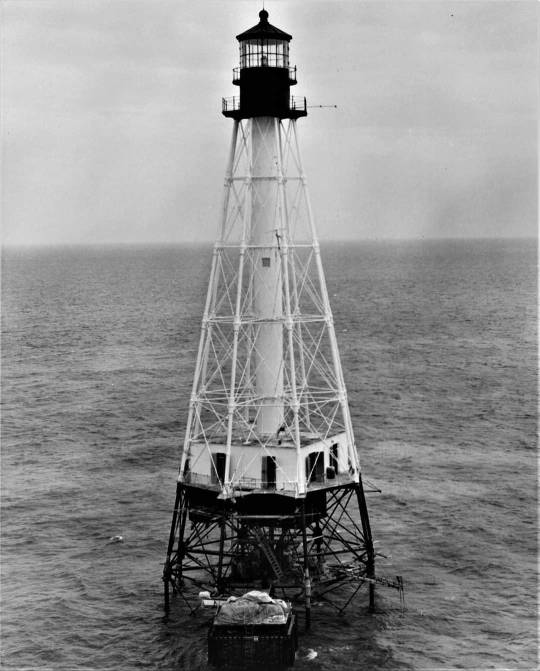
Alligator Reef Lighthouse History
After $185,000 had been expended in its construction, the lighthouse was placed into service on November 25, 1873. A revolving first-order Fresnel lens filled the lantern room and produced a scintillating series of flashes separated by five seconds and with every sixth flash red. In July 1880, additional ruby panels were installed on the lens to change its characteristic so every third flash was red. New mineral-oil lamps were supplied to the station in 1884 to take the place of the lard-oil lamps, and an oil room, large enough to hold a year’s supply (about 2,206 gallons), was built and hung beneath the dwelling.
Today, 150 years later, she is lit by 6 1400w solar power bulbs installed by the Save Alligator Lighthouse committee in 2023.
Every swimmer who takes on the challenge of Swim for Alligator Lighthouse, is also helping us in the challenge to restore this treasure, and keep her with us for another 150 years!
0 notes
Text
Inventions in the Victorian era
youtube
Photographic Cameras - 1838:
Nicéphore Niépce took the first image (although only partially successfully) in 1816. He achieved this with a homemade little camera. It was a start, but it wasn't flawless. Niépce experimented with photography until his death in 1833, when his companion, Louis Daguerre, carried on his work. Daguerre eventually developed the first viable photography method and camera, known as a Daguerreotype. This was produced in 1838 and first displayed to the public in 1839. As technology advanced and cameras grew more popular, this early type was eventually superseded by subsequent ones.

Flushing toilets 1858:
Water closets, which employed a water-filled cistern above a toilet to flush out waste, were recognised and used in London as early as 1775. They were, however, few and far between. So much so that sewage continued to flood the streets and contaminate the drinking water. This resulted in cholera outbreaks that killed tens of thousands in the 1830s and 40s. With the construction of sewers in the United Kingdom beginning in 1858, cholera mortality began to fall. In 1851, at the Great Exhibition in London, George Jennings invented a flushing toilet to flush waste into sewers. They were not popular until Thomas Crapper improved the flushing mechanism. Thomas Crapper created and patented several toilet advancements, but not the contemporary toilet; yet, he was the first to exhibit his work in a store showroom. For those who could afford them, his creations and those of others such as Thomas Twyford, Edward Johns, and Henry Doulton grew in favour. Even in the 1870s, individuals utilised a toilet or a dirt hole to relieve themselves. In terms of style and quantity, flushing toilets only began to resemble what we know today in the 1880s.
The Light Bulb - 1870s
Light was available at the flip of a switch for the first time in human history, due to a basic household product, the light bulb, yet it took longer than the whole Victorian era for homes to be lighted by electric light. Humphrey Davy, an English scientist, demonstrated the passage of electric current via a wire in 1802 by heating it and then emitting light. He and others experimented for years until the 1870s, when American inventor Thomas Edison invented the incandescent light bulb, as well as the vital energy distribution infrastructure. Light bulbs altered building design, the duration of the working day, and transportation and economic opportunities. In the 1890s, most people's first encounter with an electric light would have been in public locations, such as a train station. Electric light bulbs would not replace candles, oil lamps, or gas mantles in their houses until far into the twentieth century. Incandescent light bulbs, which have been in use for less than a century, are being phased out in favour of more energy-efficient bulbs that provide more light than heat. Edison's ideas are not completely gone; he designed the screw fitting, which is still widely used today.

0 notes
Text
Table Lamp indoor lighting
Indoor lighting is generally achieved utilizing light installations, and is a vital piece of inside plan. Lighting can likewise be an inherent part of scene projects.
With the revelation of fire, the earliest type of fake lighting used to enlighten a region were open air fires or lights. As soon as quite a while back, fire was ignited in the caverns of Peking Man. Ancient individuals utilized crude oil lights to enlighten environmental elements. These lights were produced using normally happening materials like rocks, shells, horns and stones, were loaded up with oil, and had a fiber wick. Lights regularly involved creature or vegetable fats as fuel.
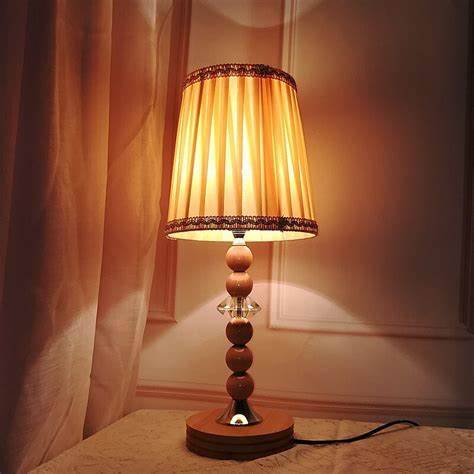
Many these lights (empty worked stones) have been found in the Lascaux collapses current France, dating to around a long time back. Slick creatures (birds and fish) were likewise utilized as lights subsequent to being strung with a wick. Fireflies have been utilized as lighting sources. Candles and glass and ceramics lights were additionally invented.Chandeliers were an early type of "light apparatus".
Faint evening lighting for the old distribution centers along the stream in the old town of Porvoo, Finland
Gas lighting was adequately efficient to influence streetlamps in significant urban communities beginning in the mid 1800s, and was likewise utilized in a few business structures and in the homes of well off individuals. The gas mantle supported the glow of utility lighting and of lamp oil lights. The following significant drop in cost occurred during the 1880s with the presentation of electric lighting as curve lights for huge space and road lighting, trailed by glowing light based utilities for indoor and open air lighting.
https://kapooreilluminations.com/product-category/table-lamp/
0 notes
Text
Evolution of Light
How the Lights are Evolved?
Earlier, artificial light started out as a luxury, and it was expensive. In Babylon in 1750 BC it would cost someone 50 hours of work at the average hourly wage to earn just one hour of reading light. In 1800, 6 hours of work would earn someone 1 hour of light with a tallow candle. Molfino provides you with the best and smart information about the Evolution of Light. In 1880, it would take 15 minutes of work with a kerosene lamp, and 8 seconds of work in 1950 with Thomas Edison’s light bulb. Today, it would only cost you half a second of work to earn an hour of light.
Since the discovery of light, illumination techniques have evolved alongside human civilization. From the ancient fire torches to modern light bulbs, lighting is an integral part of human life. However with the progression in technology, lighting no longer remains a means of lighting up the dark. From the invention of a simple on-off switch, we are now able to adjust brightness, colors and projection range at our fingertips—to effect a desired mood in the surrounding space by our mobile also. Molfino provides you the best, shortest and important information about the Evolution of light. This is why, as a global leader in lighting technology, we believe that lighting is possibly the quickest and most powerful way to evoke moods. Here at Signify (previously Philips lighting design lab), we are inspired to study the depth of this connection.
Nowadays,there are many different types of lights available after the evolution of Lights. The different types of lights are as follows:
Natural Lightings
Candles, Torches and Lamps
Gas Bulbs
Incandescent Bulbs
Fluorescent Tube Lights
CFL Lamp
LED White Light
Natural Lightings
In simple words, natural light is a light which is generated naturally, the common source from the Sun. This is as opposed to artificial light, which is typically produced by electrical appliances such as lamps. Natural light is received during daylight hours and covers the visible spectrum with violet at one end and red at the other. Not only is natural light beneficial for health, wellbeing and a good source of Vitamin D, it is required by plants to carry out photosynthesis. Other sources of natural light include fire and, on clear nights, the moon. Natural light can play an important role in creating a comfortable environment, helping to regulate the body clock, improve concentration and create a calm, tranquil setting. It can reduce the energy consumption of a building compared to artificial light and can also help prevent mold or mildew from developing in buildings since these spores thrive in darkness.
Candles, Torches and Lamps
Until in the 19th century — ironically, on the eve of the light bulb's invention — methods of lighting remained more or less unchanged since earlier antiquity. Three forms of lighting existed, in order of their appearance: torches, lamps, and candles. All of which used animal fat or, in the case of lamps in the most advanced ancient societies, vegetable oil. Thus people thousands of years ago rolled back the darkness, not only of night, but of remote places far from the Sun. When you are thinking about lighting, it’s important to think of three different things: the fuel source, the luminaire, and the technology used to produce visible light. We’ll touch on those three items as we look at the evolution of lighting from its birth to the modern day revolution that is happening with 21st century LED technology.
Gas Bulbs And Incandescent Bulbs:
In 1879, Thomas A. Edison received a patent for the incandescent light bulb. The emission of light from an incandescent bulb is produced from a filament being heated, which contains an inert gas. The filament within the incandescent bulbs is made from tungsten, making the glow more luminous and consumes less energy. Even though Edison is credited with creating the incandescent light bulb, the first signs of continuous electric light were reported as early as 1835. Some theories have surfaced that it was Nikola Tesla who invented the incandescent bulb. Still, there is little to no proof to back up these theories – leaving Edison the victor. “Halogen” can be defined as a group of elements on the periodic table – fluorine, chlorine, bromine, iodine, and astatine. This group of elements is nonmetallic and reactive, forming strong acidic compounds with hydrogen.
Fluorescent Tube Lights, CFL Lamp and LED White Light
Fluorescent light bulbs are a specific type of gas-discharge light (also known as a high intensity discharge, HID, or arc light). CFL is an acronym that stands for compact fluorescent light. Standard fluorescent lights are available in tubes (generally 48 to 84 inches in length). CFLs are much smaller. They are still tubes but they are, as the name implies, “compact.” CFLs were designed to replace standard applications for incandescent bulbs as they are both more efficient and longer lasting. Fluorescent technology has been around for more than 100 years and it generally represents a high efficiency way to provide lighting over a vast area. The lights are much more efficient as well as longer lasting than incandescent bulbs, however, they fail in both categories when compared to LED.
https://www.molfino.in/Home/Index
0 notes
Text
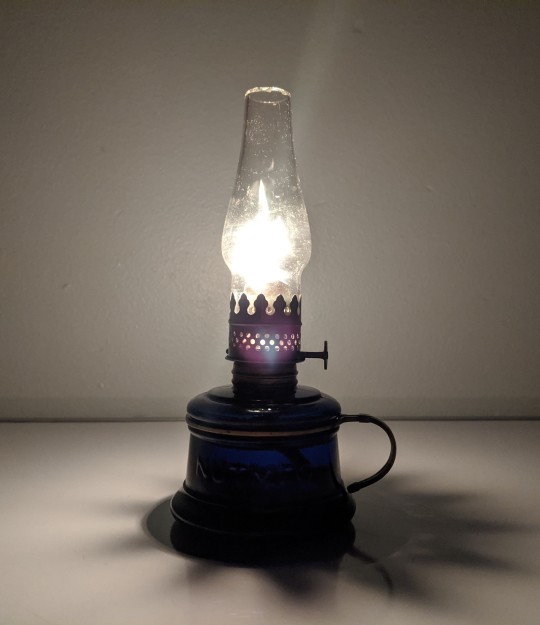
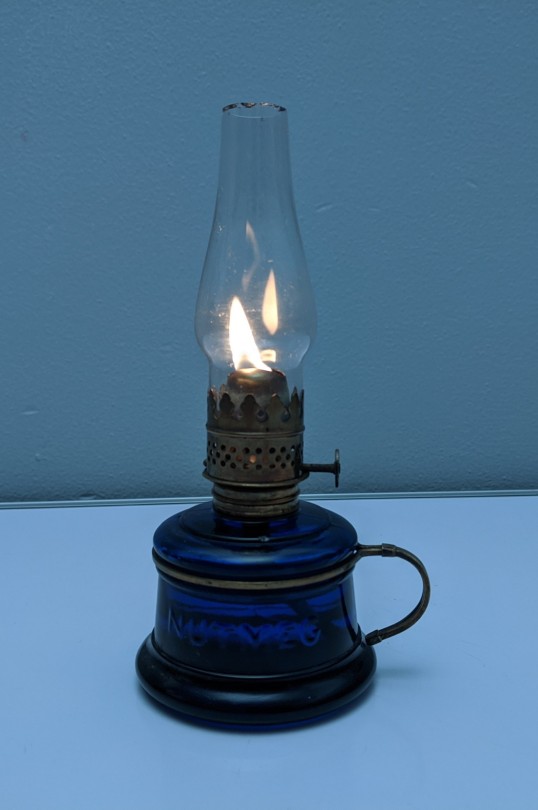

Nutmeg miniature oil lamp, made in 1889.
#vintage#history#museum collections#old#museum#antique lamp#vintage lamp#oil lamp#lamp#antique#antiques#1880s#1800s#victorian era#victorian#blue#design histroy
81 notes
·
View notes
Text

Antique Oil Lamp w/ Queen Anne 2 Brass Burner by Scovill & Glass Shade Late Victorian 1880s or 1890s raised Lip around top edge and flat bottom makes this the perfect lamp to fit into a wall mounted clamp or cast iron swinging bracket!
#Antique oil lamp#1880s oil lamp#1890s oil lamp#Victorian oil lamp#queen anne oil lamp#scovill oil lamp#oil lamp#antique lighting#1800s lighting#etsy
0 notes
Text

What is AQUA?

Aqua is a genre of aesthetic that involves the presence of liquid in physical media, made for the purpose of decoration and/or play-related purposes. This aesthetic has existed for many decades, spanning as far back as the 1880’s, and seems to regain some semblance of trending popularity every other decade or so.
The visuals of the movement of the liquid is the most vital aspect of Aqua, its movement showcased through being tinted with different colors, containing small fillers such as glitter/confetti or sand, containing charms or play pieces, or other liquids of different densities, all of which flow, ooze, settle, float, bounce, or are whooshed around to emphasize the presence of this movement.
Despite its name, the liquid in question does not necessarily have to be water based. Instead, it could be water, oils, wax, glycerin, alcohols, or even slimes/goos.
Aquatic Media encases the present liquid in a sealed transparent area to allow for it and whatever may be added to it to be properly viewed and appreciated without it spilling out.
Common examples of Aquatic Media include:
•Liquid Motion Stim Toys
•Water Wigglers
•Liquid Wave Paperweights
•Handheld Water Games

Classic Influential examples of Aquatic Media include:
•Snow Globes
•Lava Lamps


Miscellaneous examples of Aquatic Media include:
•Aqua Pets
•Aqua Computer Mouses
•Liquid Glitter Jelly Bracelets
•Liquid Keychains

Handmade examples of Aquatic Media include:
•Sensory Bottles
•Resin Liquid Shaker Charms


[ Photo 1 credit- masandpas.com - Photo 2 credit- AmyMade on YouTube ]
And there’s many more!
TLDR; Aqua is any physical media filled with liquid and various fillers sealed inside for the purpose of decorative display or play.
NOTE: Aquariums and tanks housing real live animals are not considered as Aqua for me personally, as it seems wrong to group living creatures in an otherwise entirely object based aesthetic genre. Rather, I see aesthetics involving genuine aquatic animals as adjacent to it. However, medias mimicking the nature of aquariums and tanks but involving no true animals, I do consider Aqua. This is my own view though, and others may consider differently.
#figured posting my definition of what Aqua means to me could help clarify this blog a bit!#aqua#aquacore#colored text
168 notes
·
View notes
Photo

When artist Ingalill saw this beautiful home for the first time, she fell instantly in love. Today, the old stone house with its park from the 1870s is her home and creative workplace.

The walls in the hall were repainted by the previous owners. Ingalill has found the large national romantic floor cabinet. The chairs are from a flea market.

The dining room table from 1880/1890 is actually a combined dining and billiard table. The chairs in the 18th century style were made in the early 20th century. The carpet was a gift. The wall's collage of paintings is mostly made by Ingalill, her daughters and mother and some artist friends.

The green tiled stove from the 1890s was used by the previous owners. The wall panels will be painted dark brown as they were during the beginning of the 20th century. The ceiling lamp is an Art Nouveau lamp purchased at a local flea market.
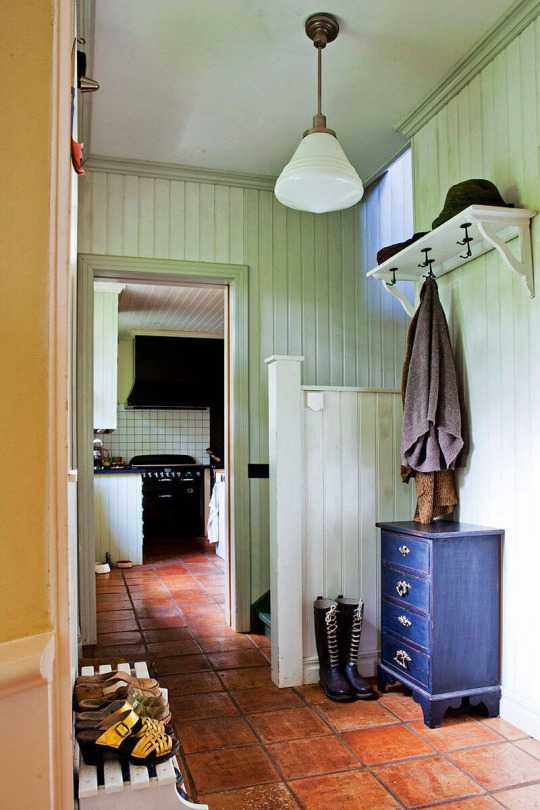
There are two entrances to the house- the small one is next to the kitchen and has a staircase up to the studio.

The large kitchen, rustic and English-inspired, was made by a local carpenter who also built it on site. With solid black stone worktops, good storage, and two stoves, an English Falcon stove and an old brick-in iron stove, there was no reason for Ingalill to change it.

By decorating the window niches with tempera paint and oil-gilded details with real gold leaf, Ingalill has given the bay window a new and colorful life.

The home office was formerly a music room. The English-inspired desk from the turn of the last century was found by Ingalill at an auction house. The chair is a flea market find.

The house's roofed and generous terrace at the back has leaded windows with oak frames.
https://husohem.se/artiklar/20200910/konstnarlig-idyll-pa-osterlen-kika-in/
99 notes
·
View notes
Text
Black Ball Line
In 1818, a very special packet ship line began its work. Namely, the Black Ball line. Originally it was called the Wright, Thompson, Marshall, & Thompson Line of Liverpool Packets of New York, later it was called the Old Line and from 1840 it was known only by its Black Ball name. The Line was founded in 1817 by four Quaker merchants, Isaac Wright, Francis and Jeremiah Thompson, Benjamin Marshall and several others. The original ships belonging to the line were the Amity, Courier, Pacific and James Monroe all together Aviso packet ships. But what was so special about this packet line was that it was the first to offer a regular passenger service between the ports of Liverpool (England) and New York from 1818, whether the ships were full or only half full. Later, the service was extended twice a month to Boston, Philadelphia, Glasgow and Le Havre.

New York: The Black Ball Packet “Orpheus” Leaving New York in 1835, by John Stobart (1929-) (x)
They were known for their fast ships, their excellent seamanship, which was due to the former Privateer Captains who now sailed the Black Balls, and the unfortunately often brutal treatment of lower-ranking seamen. Passengers were treated well, judged of course by the standards of the time.

A Black Ball Ticket for Nicholas Fish from New York to Bremen in the Black Ball Yorkeshire, 1859 (x)
The ships were, as mentioned, largely Avisos these ships had a flush deck, with a galley and the housed-over long-boat between the fore- and main-masts. On the longboat, which was of course lashed down tightly, were the livestock: pens for sheep and pigs in the bottom, ducks and geese on a deck laid across the gunwales, and on top of all, hens and chickens.
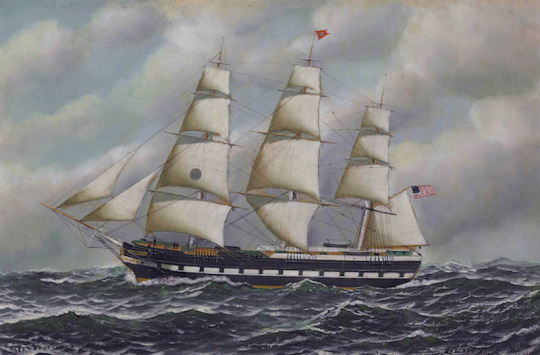
The Black Ball Montezuma, by Antonio Nicolo Gasparo Jacobsen (1850-1921) (x)
The cowshed was lashed over the main hatch, and there were other small hatches and an outhouse aft leading to the comfortable, well-appointed cabins, lit by deck skylights, candles and whale oil lamps.
The steerage passengers lived in the between decks amidships, while the fore deck for the crew was in the forecastle. Stores, spare sails, equipment, etc. were kept in the lazarette aft of the cabins, from where a small hatch led to the main deck. The hulls were painted black from the waterline upwards, with light , sometimes yellow, scraped bends, which were varnished, and the inside of the bulwarks, railings, hatch houses and boats were painted green. With a large black ball on their top foresail.

The Black Ball Line Packet Ship New York off Ailsa Craig, by William Clark (1803-1883) (x)
These boats were fast and, as later with the Tea Clippers, there were regular races to see which of the Black Balls was the faster. One of the fastest proved to be the Columbus, which regularly won all races from 1837 onwards. From the 1850s onwards, the line was also extended to Australia, Northern Germany and China and held its own for a long time, even against the increasingly favoured steamers that were gradually being used by the other lines. However, the Black Ball line was also caught up in the 1880s and disappeared into oblivion.
@mattacme i am so sorry, that you had to wait for this
52 notes
·
View notes
Text
Ships and Cars - The Sign of Code
There have been lots of discussions about code in BBC Sherlock, and the possible metaphorical meaning of different things that appear frequently in the show, such as coffee/tea, water/fire, dogs/cats and many more. This show indeed seems filled with ciphers, code and secret messages. In this meta (X) I tried to decipher the encrypted name of the fishing boat that Sherlock and John hijacked in TFP, when it was called upon from Sherrinford: “Golf-Whisky-X-ray”.
The Ship coding
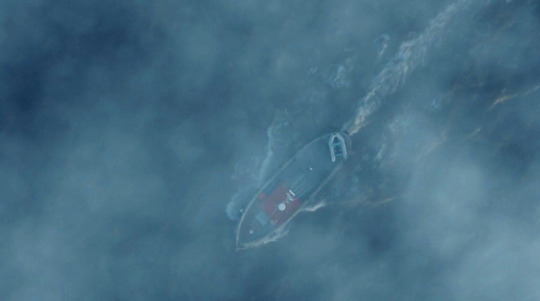
At first I thought this was referring to the international spelling alphabet for wireless communication (X, X) where there’s a word for each letter. “GWX” didn’t make much sense to me, though, until I stumbled upon something deeper: ‘Golf’, ‘Whisky’ and ‘X-ray’ are also part of the marine Code of Signals (X) that was established in Britain around 1850. It’s still used by water vessels to communicate important messages regarding safety of navigation and such, and the signals can be sent by, for example, flaghoist, signal lamp or flag semaphore. Conan Doyle worked on a ship at least in 1880 and 1881, so the signals could totally have been known to him already in Victorian times. And since Sherlock and John are on board a boat in TFP,
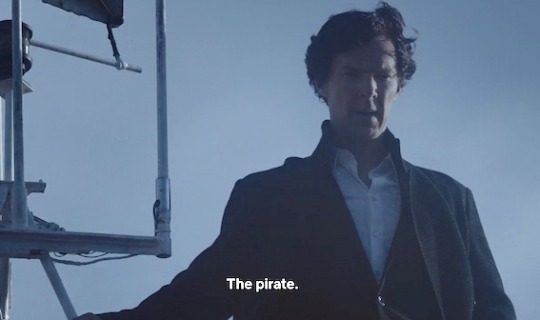
I think it’s reasonable to assume that the marine code is the relevant one here. In this signal code, the flags for “Golf”, Whisky” and “Xray” mean the following:
Golf = “I require a pilot.”

Whiskey = “I require medical assistance.”

”Xray = “Stop carrying out your intentions and watch for my signals.”

Which in other words could be read as:
I need a pilot (a maritime pilot to help me navigate)
I need a doctor
Pay attention to code
But is this use of marine signals something that only appears in BBC Sherlock? Is it Mofftiss’ own idea to use them, or could there possibly be any canon references to them? In the discussion that followed my meta (X) @frailtyofgenius pointed out to me that ACD’s canon actually does mention “Naval signals” in His Last Bow (LAST), which I think might be very significant. And the one who uses the naval signals is Holmes himself.
Continued under the cut, because this is reeeally a long ‘transport’... ;)
So I took to read LAST and realized that there are several ’naval’ references (my bolding) in this story by Conan Doyle. In the beginning, as a romantic landscape framework, we’re told about the surroundings of the German spy Von Bork’s house:
Above, the stars were shining brightly, and below, the lights of the shipping glimmered in the bay.
LAST takes place on the English east cost, near the port of Harwich. The spy Von Bork is chatting with Baron Von Herling, a German diplomat, bragging about the intelligence he’s gathered for his country, and then he shows the Baron the contents of his safe:
And all in four years, Baron. Not such a bad show for the hard-drinking, hard-riding country squire. But the gem of my collection is coming and there is the setting all ready for it.” He pointed to a space over which “Naval Signals” was printed.
But apparently the naval authorities have changed the code:
“But you have a good dossier there already.”
“Out of date and waste paper. The Admiralty in some way got the alarm and every code has been changed.”
So Holmes, posing as the Irish-American spy Altamont, is supposed to bring new ones. I think the real ‘feature of interest’ in this story, however, is the coding that Holmes/Altamont uses in his telegram to the German spy:
“Will come without fail to-night and bring new sparking plugs.
ALTAMONT.”
And the conversation between Van Bork and the Baron continues:
“Sparking plugs, eh?”
“You see he poses as a motor expert and I keep a full garage. In our code everything likely to come up is named after some spare part. If he talks of a radiator it is a battleship, of an oil pump a cruiser, and so on. Sparking plugs are naval signals.”
So here in ACD canon we’re explicitly told that the spark plugs, the ignition of the car’s engine (which generates an explosion in the engine’s combustion chamber) actually represents code - marine code. And other car references, according to Van Bork, are also marine code. I can’t help wondering if water was actually meant to represent emotions already in canon? ACD canon is packed with references to water: sea, coast, lakes, ponds, rivers and waterfalls but also ships, steamers, boats, submarines and such. Some of the criminals in canon are seamen and the navy is mentioned in some cases. And in two stories (NAVA and BRUC) the ‘naval’ issues contain secrets of national importance.
I’d love to try to analyse all the water and boat references in ACD canon and see if/how they tie into emotions, but that’s for another meta. :) But what if something similar is done in BBC Sherlock; what if Mofftiss have used not only canon’s water metaphors for emotions but also the same general secret cipher as Holmes used in LAST? But maybe Mofftiss also took the cipher one step further, interpreting anything car-related not as general metaphors for emotions, but specifically as code for sexuality.
In TFP there’s a great explosion at 221B, and next thing we know, Sherlock and John are aboard a fishing boat, which is called upon with naval signals. But there’s actually very few ships in BBC Sherlock (while canon, as mentioned, is full of them); the fishing boat in TFP is one of very few boats in the show. As for seamen, there’s also very few in the show. Except for the fishing father and son in TFP, there’a also Sherlock’s deductions about the unemployed fisherman and his mother in THoB. @sagestreet has written an excellent meta suggesting a significant symbolic meaning of ‘fishing’ in this case (X).
In this self-censored post on John’s blog, however, there’s a cruiser mentioned in the title: Tilly Briggs Cruise of Terror. But we never get to know anything about this case; the post is taken down entirely since, according to John, “the ship’s owners are launching an appeal”.

Why is this post even there, if no one is allowed to read it? Every other blog post from John has some kind of content in it - at least since he met Sherlock. But this one only has a title (and a teaser in the post before: “I'm going to tell you about a couple of the smaller cases we've been involved in. What really happened on the Tilly Briggs pleasure cruise.” (X))
So the supposed ‘pleasure cruise’ was turned into a ‘cruise of terror’ and then deleted. Maybe it’s just me, but I strongly suspect this is a clue from the show makers telling us that a certain ‘ship’ is not allowed in BBC Sherlock, for ‘legal’ reasons having to do with the ‘owners of the ship’ (ACD Estate).
Actually, there’s more info than this about the ship even in ACD canon, although it’s scarce. In The Sussex Vampire (SUSS) “Matilda Briggs” is mentioned in a letter to Holmes from the company Morrison, Morrison, and Dodd:
“As our firm specializes entirely upon the assessment of machinery the matter hardly comes within our purview, and we have therefore recommended Mr. Ferguson to call upon you and lay the matter before you. We have not forgotten your successful action in the case of Matilda Briggs.”
After Watson has read it, Holmes explains to him (my bolding):
“Matilda Briggs was not the name of a young woman, Watson,” said Holmes in a reminiscent voice. “It was a ship which is associated with the giant rat of Sumatra, a story for which the world is not yet prepared.”
If this is an allusion to a possible relationship between Holmes and Watson, indeed the world would not have been ‘prepared’ in Victorian times, since homophobia was prevalent and same-sex couples illegal.
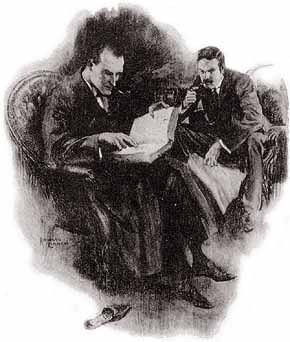
Source: (X)
Directly after this, while perusing his lexicon for ‘Vampires’ (the actual topic of the letter), Holmes also mentions another ship that was associated with Victor Trevor’s father’s secret past as a mutinous convict:
“Voyage of the Gloria Scott,” he read. “That was a bad business. I have some recollection that you made a record of it, Watson, though I was unable to congratulate you upon the result.”
Indeed this voyage in GLOR was a ‘bad business’; it ended in mutiny and disaster. The ship Gloria Scott exploded and sunk in the Atlantic, and most of the crew and passengers died.
So, not many ships appear in BBC Sherlock. But instead, there’s plenty of cars in the show. What if all these car references actually somehow actually refer to a ship - a very particular ‘shipping’? ;)
The Cars
So, might these cars code for some hidden secrets? And/or is it possible to tie the car references to ’naval code’, as Holmes claims to do in LAST, assuming that naval = water = emotions but also sexuality?
Returning to canon, please note that Holmes and Watson (both in disguise) arrive in a car to the scene of this story in LAST. This is one of the very few cars that appear in canon, since they weren’t yet very commonly in use by those times. Holmes’ and Watson’s car is modestly described as “a small car” and “a little Ford” (as opposed to Baron Von Herling’s car, which is a huge limo). But at the end of the story, Holmes says about the little Ford: “Start her up, Watson, for it’s time that we were on our way.” And there they go, happily together, with the criminal tied up in the back seat, heading for Scotland Yard. Sweet, isn’t it? :) This is the very last we see of Holmes and Watson in canon. (Unfortunately, I can’t find any illustration of it).
BBC Sherlock, however, is full of cars. So, if we apply this analogy to BBC Sherlock, what car references can we find that could be translated into marine (= emotional) terms? Well, the first thing that comes to mind is the cab, the taxi, which is Sherlock’s preferred means of transport.

A taxi has a driver, which is the word that the little girl on the plane in TFP uses instead of ‘pilot’. But we don’t see any taxi boats in the show, do we? In the Unaired Pilot, however, the cabbie drives Sherlock home to Baker Street (not to Roland Kerr’s), and there he tries to ‘kill’ him. One could even assume he makes a kind of sexual innuendo when Sherlock is sprawled face-down on the floor and the cabbie says “I could do anything I wanted to you right now, Mr ’olmes.”
As I explained in my other meta about marine code (X), a marine pilot is someone who leads a ship through dangerous waters. Mofftiss haven’t included any marine pilots in their show, but they do use aircraft pilots, even if they’re not labelled as such:
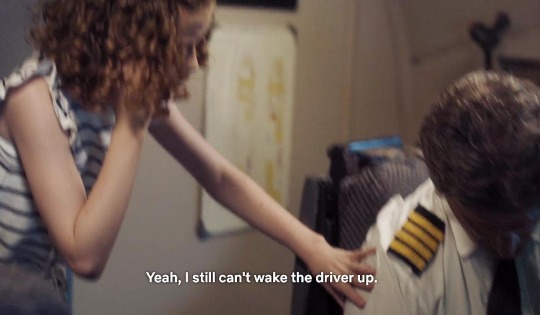
But if ‘driver’ should be read as ‘pilot’, then Jeff Hope - a John mirror - in the Unaired Pilot, the ‘driver’ of the show, guides Sherlock home emotionally and sexually, doesn’t he? ;)
But there’s more about the signals in LAST. This is what the counter-agent Sherlock ‘Altamont’ Holmes says when he arrives at Von Bork’s place:
“You can give me the glad hand to-night, mister,” he cried. “I’m bringing home the bacon at last.” “The signals?” “Same as I said in my cable. Every last one of them, semaphore, lamp code, Marconi – a copy, mind you, not the original. That was too dangerous.”
This seems very similar to Wikipedia’s explanation of the Marine Code of Signals, as I quoted above: apart from flag hoist, the signals can also be transmitted by, for example, flag semaphores, radio communication or signal lamps. We do have radio communication in TFP, when Sherrinford receives the message from the boat ‘golf-whisky-x-ray’. But are there any signal lamps in BBC Sherlock? Yes, in fact there are - and they’re tied to a car!

A blinking, grinning Peugeot, no less, in THoB. And it’s definitely connected to sex, because that’s what’s happening inside. ;) Even if we’re lead to believe that this isn’t actually code, John does try (unsuccessfully) to decipher the blinking lights from this car as Morse signals and gets “U M Q R A”.

Apparently this code is not referring to the Marine Code of Signals. But @bug-catcher-in-viridian-forest has written an excellent meta (X) deciphering the possible code “UMQRA” as meaning “TORCH”, using the Ceasar cipher, which Sherlock refers to on his website (X) in combination with another cipher. In my opinion this does make a lot of sense. John does indeed use a torch to try to decipher this message, and there are also lots of other possible metaphorical meanings of ‘torch’ in the show.
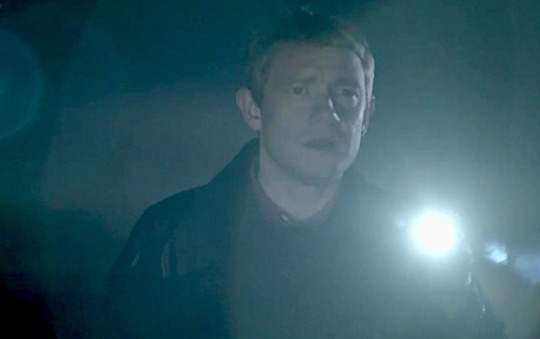
So I think it would still be wise to pay attention to code, wouldn’t it?
As for Holmes’ quote from LAST above, “a copy, mind you, not the original”, I’d interpret this at Holmes pointing out that these signals can be copied (’mirrored’?) and also that they can vary in type (I imagine that ‘Marconi’ stands for radio transmission (X)). All in all, these naval signals are of national importance in canon, just like the Bruce Partington Plans and the Naval Treaty. And these are all military top-secrets clearly connected to the British navy. At some point in LAST, believing he has won the spy game, the Baron says:“There may be other lights within the week, and the English coast a less tranquil place!” Seems like the East Wind is coming. ;)
But back to the marine codes and cars: in canon (LAST) the car references hide secrets of national importance, connected to Britain’s naval defense, and some of those secrets, in turn, are encrypted with naval signals. That’s double coding, right? Also: the navy defend British waters and water = emotions.
As for cars, there’s a lot more of them in the show, while canon has very few; cars weren’t in use during most of Holmes’ career. I think LAST is the first time that cars appear in ACD canon? And the spare parts that Holmes/Altamont talks about as code in LAST never actually appear in the story, only the Baron’s limo and Holmes’ little Ford, where Watson is the driver.
But in the modern show there’s plenty of cars, of course; they’re literally everywhere. Many people have long ago pointed out that cars represent transport metaphorically, which is how Sherlock views his bodily needs in the unaired Pilot. Which ties in well with the assumption above that cars also represents sexuality, which is related to emotions even if it’s not the same thing.
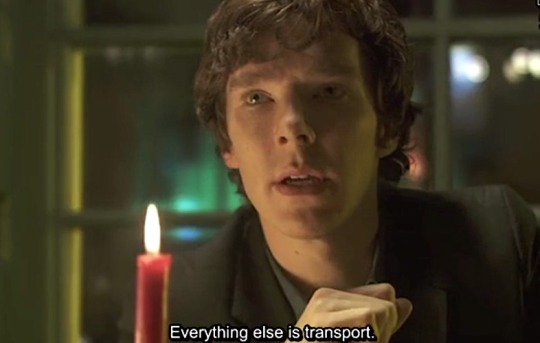
But let’s also try to decipher the car references with Holmes’s code in LAST in mind, shall we? Where can we find water and/or possible hints about emotions and/or sexuality?
Apart from the taxis, which run like a red thread through the episodes (ASiP, TBB, TGG, ASiB, TRF, HLV, TST), and the abundance of police cars and ambulances, I can think of the following:
Mycroft’s black governmental car which is used to kidnap John in ASiP (and other episodes).
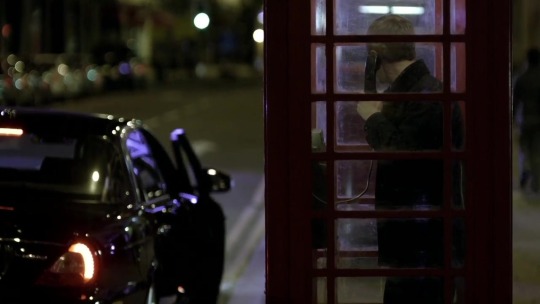
If Mycroft represents Sherlock’s brain, this might be about Sherlock trying to examine and test John with his intellect, to get an idea of who John is and what to expect from him. But this task is driven by his car - bodily needs - and behind them there’s still emotions, if we apply Sherlock’s code in LAST.
The first hostage’s car in TGG, where she is wrapped up in semtex.
This woman is literally trapped inside her car and metaphorically trapped inside her bodily needs, which are threatening to explode (remember Holmes’ ’sparking plugs’ in LAST?) if Sherlock doesn’t solve the puzzle about Carl Powers. And in this screen cap she is literally juxtaposed to Sherlock:
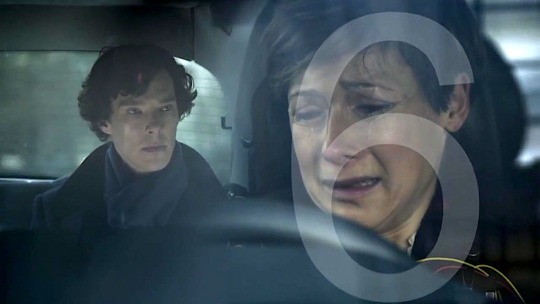
So it seems like Sherlock is now trapped inside his ‘transport’, yes? Still driven by emotions rather than intellect. And he probably sees this as very dangerous.
The finding of The ’dead’ man’s car with (fake) blood in TGG.
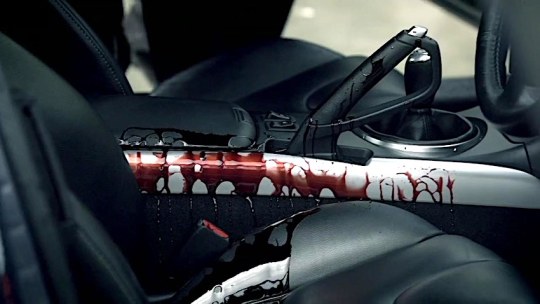
This ill-treated transport device (John calls it ”an abandoned sports car” on his blog X) leeds to more cars - Janus cars - and it turns out that the driver - Ian Monkford - isn’t dead; he’s just on ’vacation’ in Colombia (with the real purpose of cashing in his life insurance money). Sherlock figures this puzzle out and the poor fellow wrapped in semtex can breathe out; he’s not going to explode, either physically or emotionally. And no-one is dead in this case, but the driver faked his own death to avoid exposure and get his ‘security’.
The car with a dead body in the boot in ASiB

Licence plate: PYO3 HYN. The dead man in this car was destined for Germany according to his tickets - another ‘vacation’? But he never reached there; his plane crashed but he wasn’t in it, because he was already dead - trapped in his transport a car. Now, this case seems intimately connected with Sherlock in the boot of Mrs Hudson’s Aston Martin in TLD (see below). Except that Sherlock was being transported alive in that boot, but this guy is dead.
The client’s back-firing old SAAB in ASiB
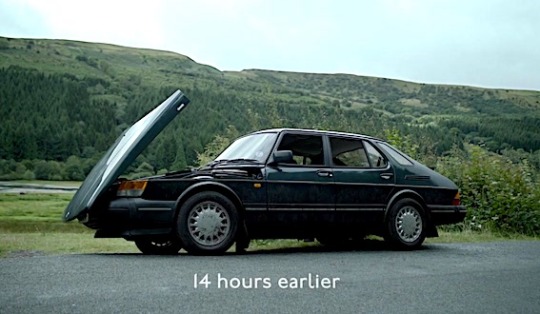
The client stops near a wetland area and a stream because of problems with his engine. The driver - a John mirror? - tries to fix his ‘engine’, but the old car just won’t start. Sherlock analyses this case in his (drugged) Mind Palace together with his libido Irene Adler.

People have pointed out long ago (sorry for not remembering who - was it LSiT?) that the back-firing SAAB engine in the hiker case in ASiB might represent John’s dysfunctional sexlife with women; Sarah in specific and probably their trip to New Zeeland after TGG. (Maybe this is also why Sherlock in TSoT, when John has just been married to Mary, deduces that one of the wedding guests - a doctor - has ‘erectile dysfunction’?)
Irene’s black car in ASiB
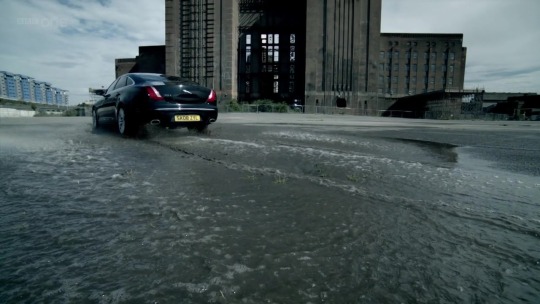
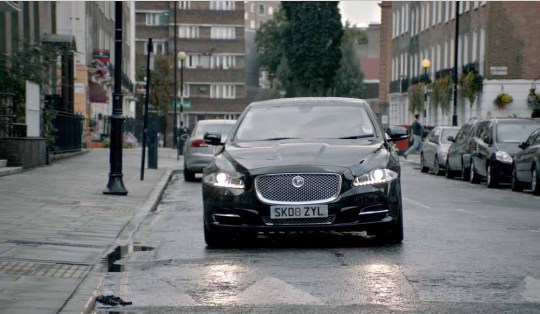
Licence plate: SKO8 ZYL. This black car, which has a private driver, is used to transport John to the Battersea station on New Year’s Eve in ASiB. In spite of being in midwinter, Battersea seems to be flooded with water. And this is the place where Irene exposes John’s sexual relationship with (or at least interest in) Sherlock while Sherlock is listening to the conversation from another room, but John declares that “I’m not actually gay”. This car is so similar to Mycroft’s black car (see above) that John thinks this is Mycroft who kidnaps him again. If Irene represents Sherlock’s libido, what does her black car stand for?
Sherlock’s and John’s hired Land Rover in THoB

Licence plate: OEI0 HFK. The Land Rover is a British car, known for its four-wheel drive and vast off-road capacity. Sherlock drives this car to “deepest, darkest Devon” with John in the passenger seat, so it seems like they were prepared for a ‘bumpy ride’. And this car actually has a visible spare part; an extra wheel in case of emergency:

And their journey really became ‘bumpy’ - at least on an emotional level, since they were both dosed with a fear-inducing gas, had a quarrel, and the gay couple who were running the Inn where they were staying took for granted that they were indeed a couple too.
John’s and Mary’s car in HLV and in TST

Licence plate: SP56 LJY, black Audi. Mary is the driver in HLV. (By the way, why has this car the steering wheel to the left, in a country with left-hand traffic?). Here we’re presented with the interesting idea from the billboard that “Information is the power to change 1895″. In HLV we actually do see something like a spare part for this car; John’s tyre lever. ;) (which looks more like some sort of pipe key, if you ask me, but whatever; it’s still a spare part - or at least a ‘tool’ - associated with John’s transport car):
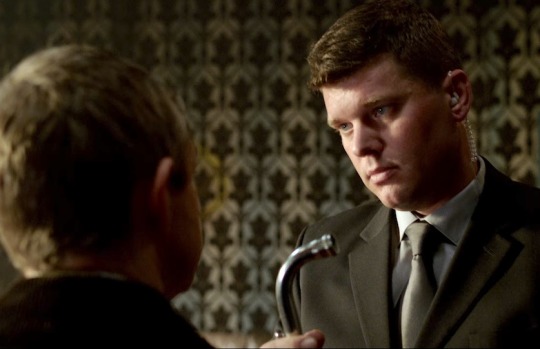
So this would be consistent with Holmes’ cipher in LAST. And this spare part is treated with very sexual overtones in HLV, so I think the influence of Sentiment and Sex is pretty clear here.
Mrs Hudson’s red Aston Martin in TLD

License plate: APIS CXJ. Now, this is a really interesting and beautiful car I think, and it shows its capacity when it goes speeding in TLD. Mrs Hudson has more resources than some people might believe. But John is only allowed to use her sports car - the ultimate symbol of male virility - when he’s off to rescue Sherlock. ;)
The license plate reads APIS, which I’m sure is a reference to bees and bee keeping, because Apis mellifera is the scientific name of the honey bee. Holmes’ main occupation as retired in ACD canon is bee keeping, which is shown in LAST, where his secret ‘sparking plugs’ turn out to be the Practical Handbook of Bee Culture. ;)) So Holmes stood by his words in his telegram to Van Bork; he did “come without fail to-night” (he came together with Watson) and he did “bring new sparking plugs”. It’s just that the ‘spark’ wasn’t maybe of the sort that Van Bork had expected...
Anyway, in this scene in TLD, Sherlock is being kidnapped and handcuffed by Mrs Hudson and transported in the boot of that sports car; he’s literally trapped inside the rear end of his transport, which has John as its direct destination.

Sadly for all of us, however, John refuses to ‘examine this body’, and this is instead done by the John mirror Molly (inside an ambulance), who tells Sherlock that he’s dying and that “it’s not a game”.
The next time we see this red sports car, however, John is the driver, and he’s using its great capacity as it should be used: to come to Sherlock’s rescue. ;)
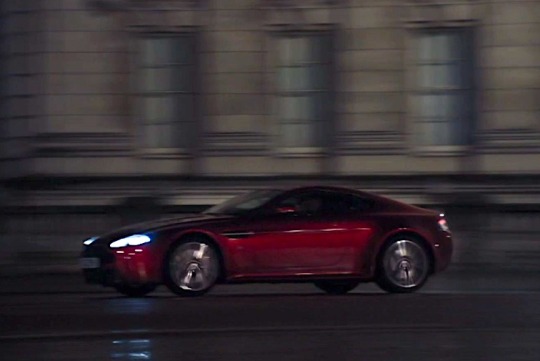
Come to think of it, there’s actually at least one more car spare part mentioned in the show, even if it might not be meant as this specific part:

This car has a steering wheel nevertheless, and Sherlock is sitting in the car while saying this. And yes; this show is indeed repetitive when it comes to certain topics. Like ‘transport’, emotions and bodily needs. But I do hope we’ll finally see some new turns on this topic in the next series. ;)
Thanks for your patience in following this marathon meta to its end! Tagging some people who might be interested (please alert me if you don’t want to be tagged):
@raggedyblue @ebaeschnbliah @gosherlocked @sarahthecoat @lukessense @therealsaintscully @thewatsonbeekeepers @sagestreet @tjlcisthenewsexy @thepersianslipper @loveismyrevolution @shylockgnomes @frailtyofgenius
Screencaps in this meta are in some cases borrowed from this site (X).
94 notes
·
View notes